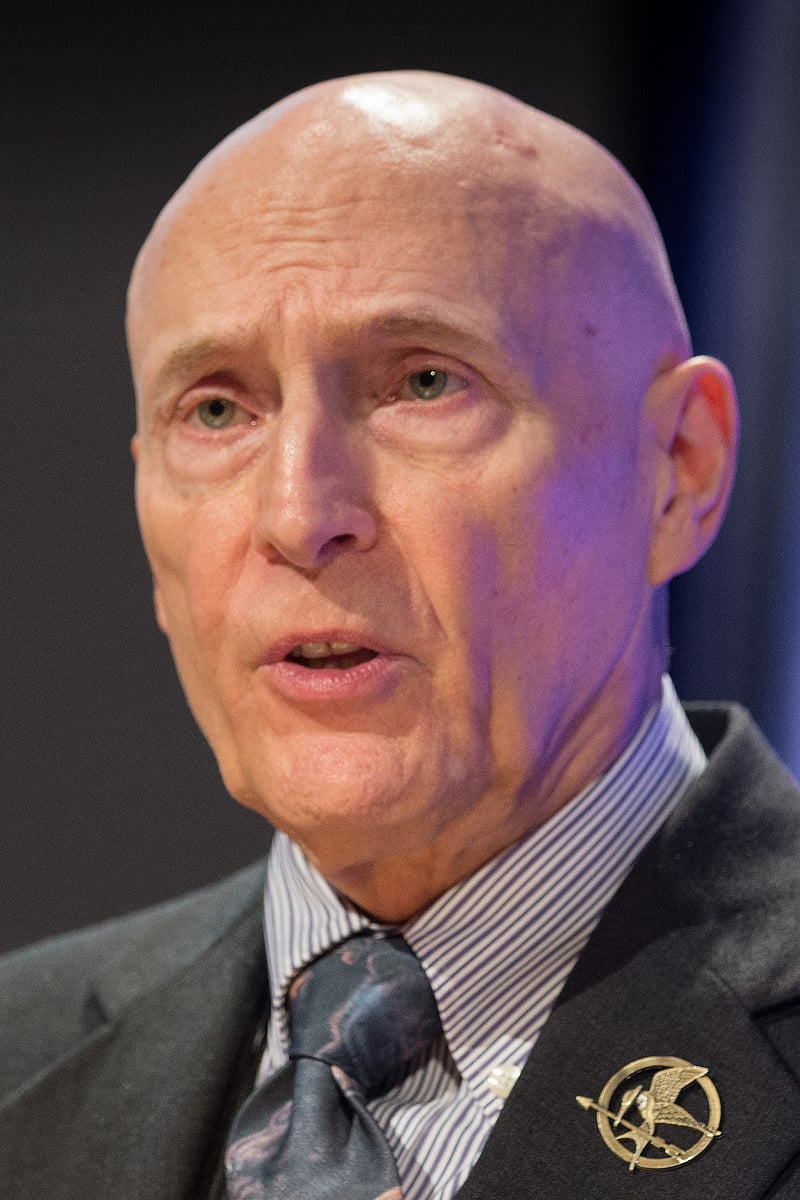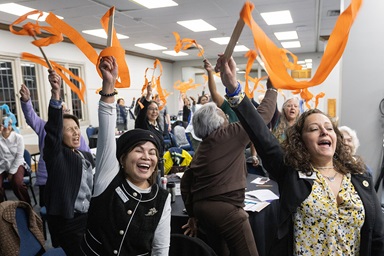Key points:
- United Methodist centrists and progressives have made common cause in working for the inclusion of LGBTQ people in church life.
- Lonnie D. Brooks, a veteran General Conference delegate, expects the coalition to be short-lived.
- He predicts differences will arise between centrists and progressives in how they approach ministry with the poor.

Photo by Mike DuBose, UM News.
Commentaries
On Dec. 15, 2022, Heather Hahn and Sam Hodges of United Methodist News gave us what might be our first solid insight into the scope of the disaffiliations that are sweeping across The United Methodist Church in the United States.
Up to now, much of United Methodist leadership has been attempting to downplay the significance of our separation, arguing over whether it ought to be called a split, a splintering or a separation. That kind of thing is trivial, irrelevant and unhelpful in the extreme.
As is made dramatically real in this report, coupled with the unrelenting loss of membership over the last 50 years, this separation is the largest downsizing of the main branch of the Methodist movement worldwide since the 19th century.
Some of our annual conferences will face hard choices. They will either have to reorganize as much smaller entities with dramatically reduced resources and staff, or they will have to look for consolidation with other conferences nearby.
Our general agencies are going to have to go through a much similar process, as resources to sustain them simply disappear. Options for the agencies are downsizing, consolidation and discontinuance.
The episcopacy, already on shaky financial footing, will see its crisis deepen, pushing us further along the path toward a reduced number of bishops who serve for terms in the United States — as is already true in most of our central conferences.
Another crisis is the likelihood that the coalition between United Methodist centrists and progressives — which has, to one degree or another, precipitated this wave of disaffiliations — will unravel and disintegrate.
The coalition between these two interest groups is based on a common commitment to full inclusion of LGBTQIA+ persons in the life and ministries of The United Methodist Church. And the presenting problem going forward is that this commitment is the only thing that the two groups have in common.
In analyzing what’s before us, it’s important to remember that up to the end of the special session of the General Conference in 2019 the balance of power in the church was maintained between the traditionalists on one side and the progressives on the other, who literally fought between themselves for dominance in church decision-making, with the centrists making occasional but mostly futile forays into the fray in their attempt to maintain peace and unity.
The centrists did that by supporting the view of the church as an example of big-tent polity with room for those who espoused many viewpoints on various divisive issues, most prominently human sexuality. These proposals included such offerings as the 2016 Third Way proposal from the Connectional Table, which was followed by the One Church Plan proposed by the Commission on a Way Forward and, to one degree or another, the Christmas Covenant, proposed by a group of Filipino United Methodists who were joined by a few other central conference members. For whatever it’s worth, both the One Church Plan and the Christmas Covenant used the Third Way proposal as a starting point, even using some of the language verbatim.
Subscribe to our
e-newsletter
The 2019 General Conference, which looked so much like a defeat of the progressives, was in reality the end of the road for centrists. At that point we had no choice but to become allies with the progressives and deny the apparent victory of the traditionalists — which, in effect, left the traditionalists with no real option other than separation. So, a provision championed by traditionalists as a pathway for the exit of the progressives has become an exit path mostly for traditionalists.
The really bad news for centrists is that with the departure of the traditionalists who have maintained the balance with the progressives, the progressives are poised to make a triumphal display of power at the upcoming General Conference in which they will move forward with the entire agenda of the progressive movement.
To understand what that means we have to take a look at what the difference is between a Christian who is a centrist and one who is a progressive. That’s a really long list, but it can be compressed into some illustrative basics and highlights.
- A centrist is suspicious of social goals that can only be achieved through the coercive power of the state, and further believes that the separation of church and state embraced in United States self-understanding means forays of the church into affairs of government ought to be rare and limited, as well as that the state has no right to interfere in the affairs of the church. A progressive, on the other hand, embraces the coercive power of the state as the most effective option for achieving worthy social and political goals and further sees it to be the duty of the church actively to intervene in the secular political process.
- A corollary to the foregoing is that a centrist hears the Gospel call that there be among Christians a preferential option for the poor to be a call to the church to orient its mission and ministries to support policies and programs that protect and serve the poor, in the church and in society. A progressive hears the Gospel call for a preferential option for the poor as a call for a preferential option for the state.
- A centrist is committed to the mission of the church as making disciples of Jesus Christ who are called by the gospel to transform the world. A progressive is committed to the transformation of the world and sees making disciples as important only insofar as it leads to the desired world transformation.
- In the inevitable tension between the social values of personal freedom and equality, the centrist always tends to lean more heavily toward preserving freedom, and the progressive always tends to lean more heavily toward equality.
- A centrist sees inequality of outcome to have complex origins in inequality of opportunity, ability, entrepreneurial initiative and accidents of location. A progressive sees inequality of outcome as proof of inequality of opportunity.
- A centrist sees the merit of any proposal as determinative of whether the proposal is good or bad. A progressive sees the process followed as well as the identity of the composers and promoters as determinative.
Whatever else it might mean for progressives to stage General Conference 2020, to be held in 2024, as a triumph for the progressive movement, it most likely will mean the end of any dream of a big-tent church with room for dissent on the agenda of progressives, which means for all practical purposes, turning the agenda of the Methodist Federation for Social Action into the law of The United Methodist Church.
W.B. Yeats said it well for all time:
Turning and turning in the widening gyre
The falcon cannot hear the falconer;
Things fall apart; the centre cannot hold;
Mere anarchy is loosed upon the world
It will be, at best, a real challenge for centrists to be part of such a church, and we’re likely to see another wave of vigorous dissent, probably with additional disaffiliations, but none based on the issue of human sexuality. And most likely the next wave of disaffiliations will involve more of our larger churches than we’ve seen in this wave.
Brooks has served as a lay delegate or reserve delegate to all except one General Conference since 2000. He is a member of St. John United Methodist Church of Anchorage and has served on four general church agencies and committees.
News media contact: Tim Tanton or Joey Butler, Nashville, Tennessee, (615) 742-5470 or [email protected]. To read more United Methodist news, subscribe to the free Daily or Weekly Digests.



